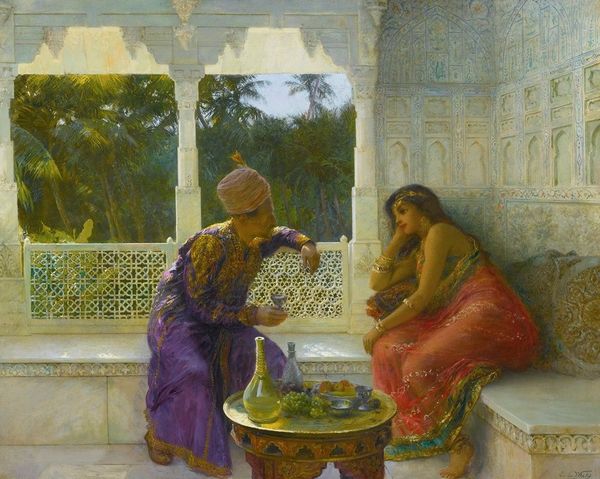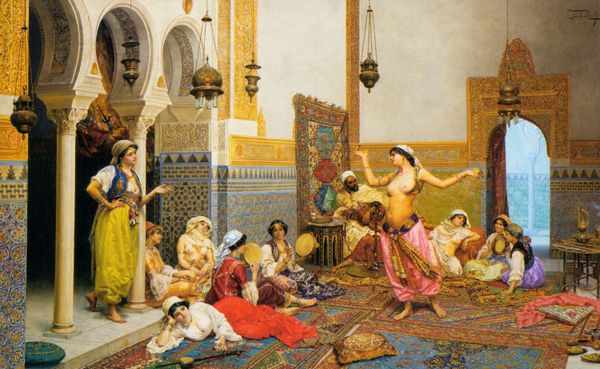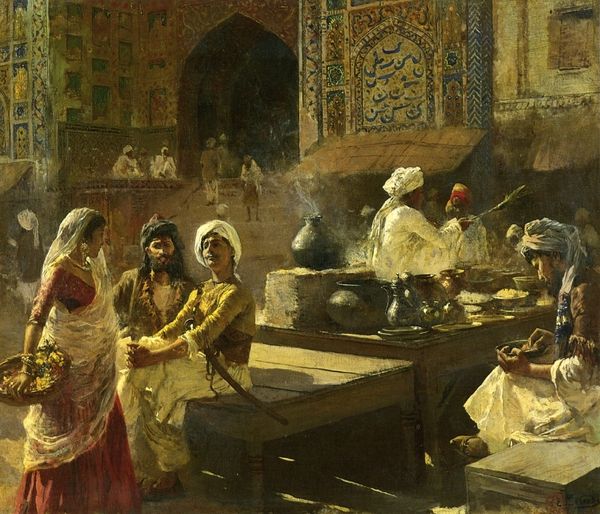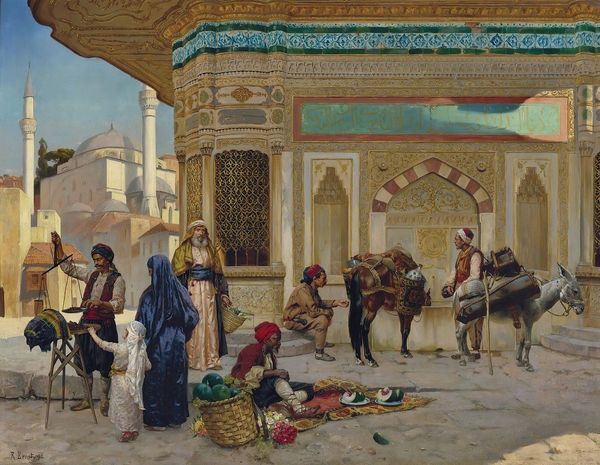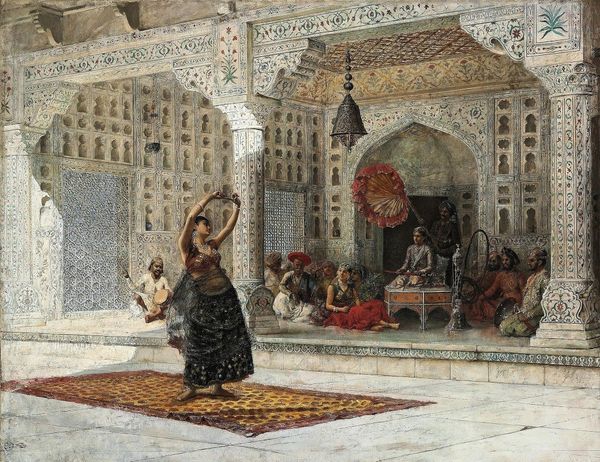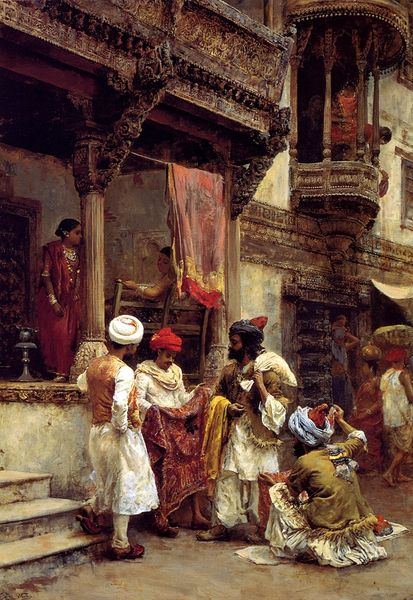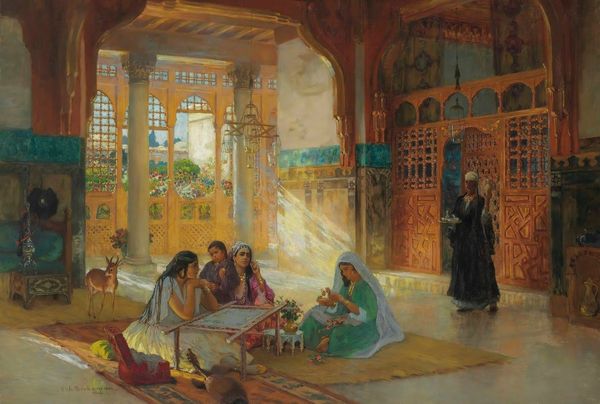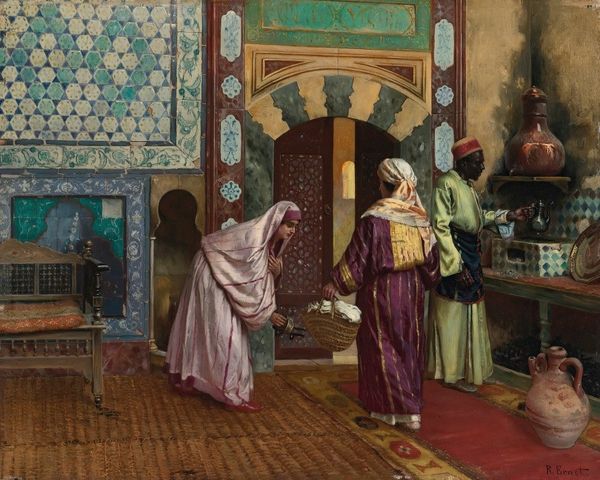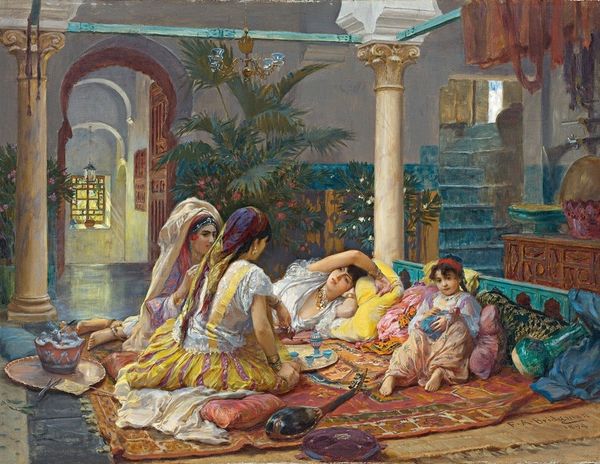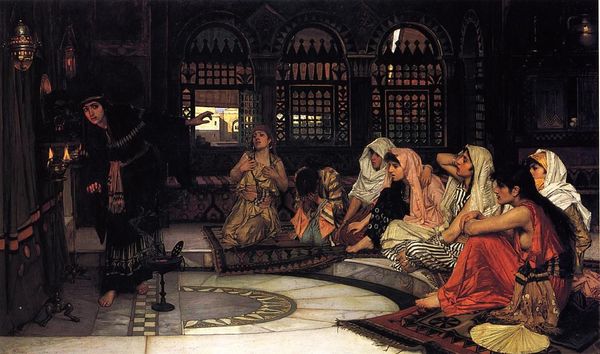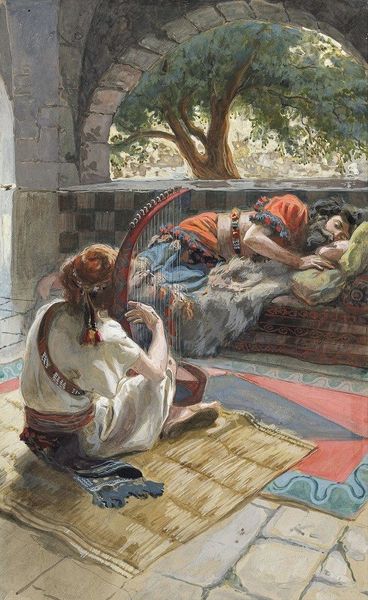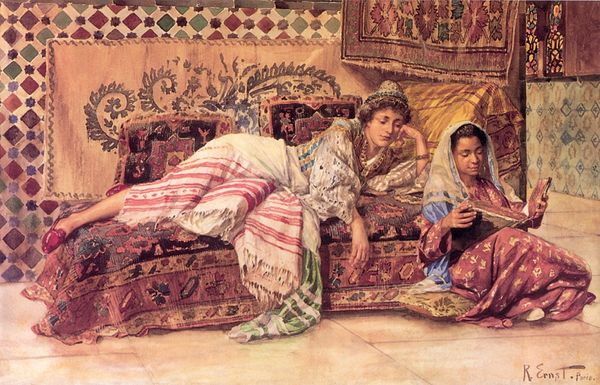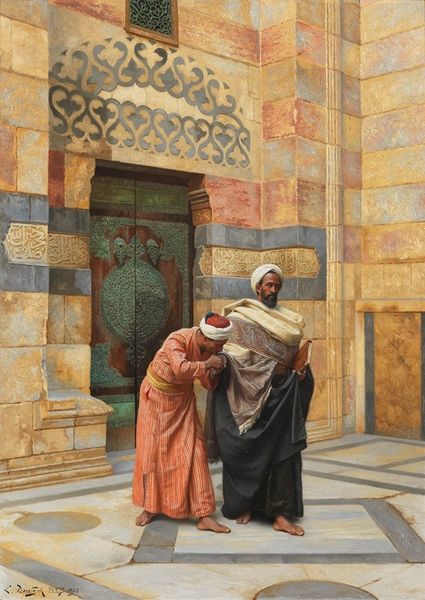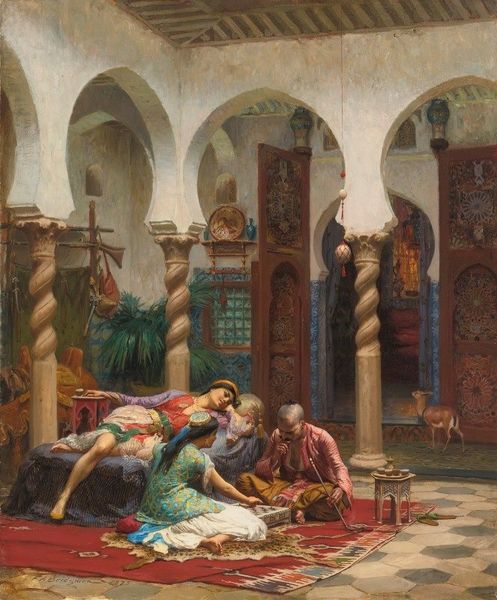
painting, oil-paint, impasto
#
portrait
#
painting
#
oil-paint
#
oil painting
#
impasto
#
romanticism
#
orientalism
#
genre-painting
Copyright: Public Domain: Artvee
Curator: Oh, my heart sings just looking at this. The title is "Dancing Girl, India", a painting by Edwin Lord Weeks. Immediately, I'm transported. The colors, the implied movement, it's pure poetry on canvas! Editor: It's compelling. That impasto! It practically jumps off the canvas. Look at the costuming; you can practically feel the fabric's weight and texture and the architectural elements look solid and imposing, giving a clear sense of location. Weeks definitely emphasizes materiality here. Curator: Precisely! It is romantic, isn't it? It captures the imagined essence of a far-off land, a moment of pure joy and artistry, yet the composition keeps the performer in the forefront. I imagine the smells, spices, perfumed oil, it’s almost intoxicating! Editor: I'd argue there is an element of staged exoticism here, popular at the time, catering to Western audiences’ ideas of “the Orient". Let's consider the artist, a privileged American traveling abroad; what labor goes into the clothes, jewels and ornamentation present in this scene? This represents the commercial appeal of Orientalism during that period. Curator: Oh, of course, that lens is important, that exotic "othering" that was fashionable. But I find something genuine in the capturing of the dancer’s fleeting grace, the warmth in her expression, it is not just a staged portrayal. It evokes feeling and the feeling of joy, don't you think? Editor: Absolutely, technique is strong and certainly Weeks captures that sense of liveliness. The loose brushstrokes on her garments really help with that, even with the potential questions surrounding it being an imagined ideal. Curator: Perhaps a touch naive, this rendering, but the overall composition is striking, an orchestrated scene for the Western gaze… it does offer that intoxicating sensation of being transported and now I have an impulse to learn to dance and to adorn myself with golden jewels. Editor: It’s a reminder that our interpretations are woven through the economic and societal tapestry that influence both creation and observation, shaping our connection with art through an emphasis on not just what, but how and for whom the artwork comes to exist.
Comments
No comments
Be the first to comment and join the conversation on the ultimate creative platform.
